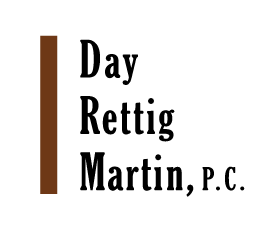The National Football League Players Association is the labor organization representing the professional football players in the National Football League. This union, like those Day Rettig Martin, P.C. represent, negotiate benefits through the use of collective bargaining agreements. There have been seven collective bargaining agreements between the NFL Players Association and the NFL team owners since the Association was first recognized in 1968.
The Problem
The 2011 collective bargaining agreement expires after the 2020 season. Of particular importance in the next collective bargaining agreement are the pension amounts for players who retired before 1993. Current retirees have the NFL’s 401(k) plan, the NFL’s Annuit Plan, a severance plan, a health reimbursement account, and the option to continue on the NFL’s group medical and dental insurance. Pre-1993 players receive only one benefit – a pension. The pensions of the 4,000 vested players from the 1950s to 1993 have remained stagnant at $255 per month per credited season. The exception to this is the increases that were part of the 2011 collective bargaining agreement. These increased those pre- 1993 pension benefits by $108 per month for each year played. So, a 10-year NFL veteran who retired prior to 1993, receives approximately $43,560 pretax dollars per year at age 55.
F.A.I.R.
An organization called Fairness for Athletes in Retirement (“FAIR”) brings awareness to educate to the pension inequality. Their website attempts to put things in perspective. They say a 10-year MLB veteran who played after 1993 receives a pension of approximately $200,000 a year at age 62. A 10-year NBA veteran who played after 1965 receives a pension of approximately $215,000 a year at age 62.
While awareness of this issue continues to grow, any solution remains murky. The Players Association has no obligation to represent retired players. Additionally, the NFL pension is underfunded. As of 2016, the pension plan was considered to be in endangered status because the funding percentage was less than 80%. The Retirement Board adopted a necessary funding improvement plan, which estimates the funding percentage to exceed the 80% threshold in 2021. The original funding improvement plan was adopted in 2011. Per the funding improvement plan, which is required by Federal law for plans that are less than 80% funded, the Retirement Board cannot accept a collective bargaining agreement or participation agreement that provides for a reduction in the level of contributions or a suspension of contributions with respect to any period of service.
The 2011 increases to pre-‘93 players caused the pension plan’s liabilities to balloon by more than $600 million. Partly because of this, and also due to the funding improvement plan, team owners tripled their contributions in 2013 to $300 million, followed by $305 million in 2014, and $266 million in 2015. The general funding issues of defined benefit plans may be why the NFL pushed to terminate the pension plan in the last round of negotiations.
Finding a Solution
So, while the pre-1994 retiree icons of the game set the wheels in motion for the record NFL revenues and salaries, there is no simple solution to the pension inequality that exists. It will be interesting to see what happens next year. As a football fan, I hope a resolution is reached so that there is no lockout.
These issues exemplify why every collective bargaining agreement is so important. Recently, our Firm has provided legal and employee benefit assistance to the General Mills union during negotiations of their collective bargaining agreement.
Please contact Attorney Joe Day regarding your labor and employment law needs.


 Visit Our
Visit Our Contact Us
Contact Us